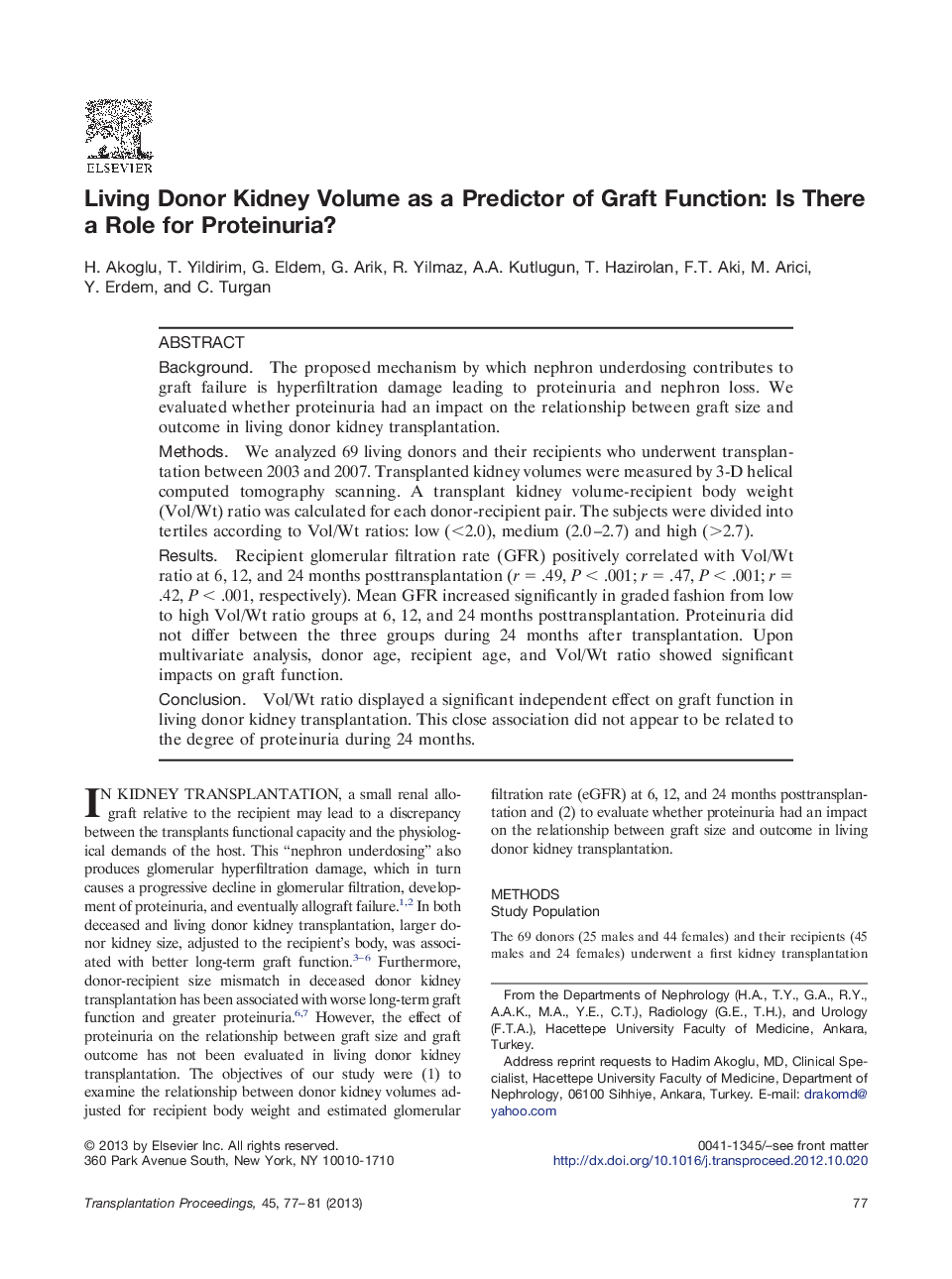| Article ID | Journal | Published Year | Pages | File Type |
|---|---|---|---|---|
| 4257065 | Transplantation Proceedings | 2013 | 5 Pages |
BackgroundThe proposed mechanism by which nephron underdosing contributes to graft failure is hyperfiltration damage leading to proteinuria and nephron loss. We evaluated whether proteinuria had an impact on the relationship between graft size and outcome in living donor kidney transplantation.MethodsWe analyzed 69 living donors and their recipients who underwent transplantation between 2003 and 2007. Transplanted kidney volumes were measured by 3-D helical computed tomography scanning. A transplant kidney volume-recipient body weight (Vol/Wt) ratio was calculated for each donor-recipient pair. The subjects were divided into tertiles according to Vol/Wt ratios: low (<2.0), medium (2.0–2.7) and high (>2.7).ResultsRecipient glomerular filtration rate (GFR) positively correlated with Vol/Wt ratio at 6, 12, and 24 months posttransplantation (r = .49, P < .001; r = .47, P < .001; r = .42, P < .001, respectively). Mean GFR increased significantly in graded fashion from low to high Vol/Wt ratio groups at 6, 12, and 24 months posttransplantation. Proteinuria did not differ between the three groups during 24 months after transplantation. Upon multivariate analysis, donor age, recipient age, and Vol/Wt ratio showed significant impacts on graft function.ConclusionVol/Wt ratio displayed a significant independent effect on graft function in living donor kidney transplantation. This close association did not appear to be related to the degree of proteinuria during 24 months.
